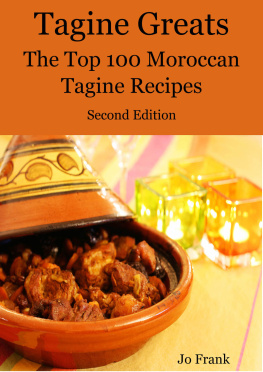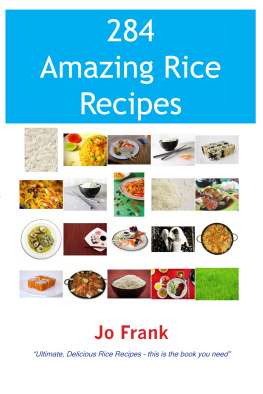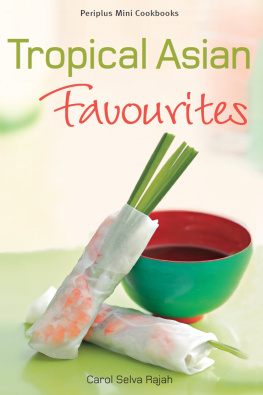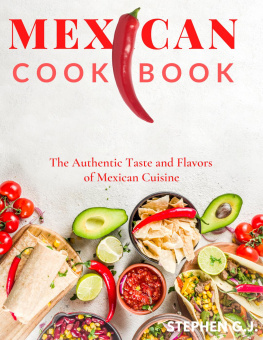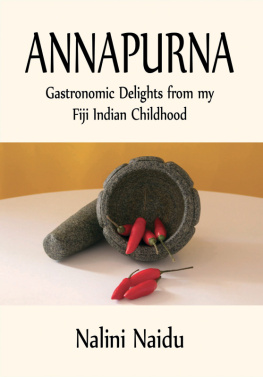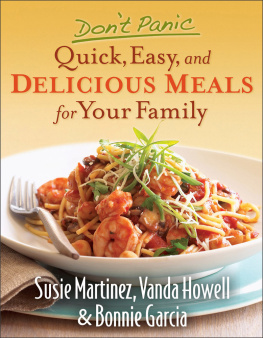Tropical Fiji Family
Kitchen Cookbook: Budget-Friendly Meals from the Tropics Your Whole Family Will Love
Notice of Rights
All rights reserved. No part of this book may be reproduced or transmitted in any form by any means, electronic, mechanical, photocopying, recording, or otherwise, without the prior written permission of the publisher.
Notice of Liability
The information in this book is distributed on an "As Is" basis without warranty. While every precaution has been taken in the preparation of the book, neither the author nor the publisher shall have any liability to any person or entity with respect to any loss or damage caused or alleged to be caused directly or indirectly by the instructions contained in this book or by the products described in it.
Trademarks
Many of the designations used by manufacturers and sellers to distinguish their products are claimed as trademarks. Where those designations appear in this book, and the publisher was aware of a trademark claim, the designations appear as requested by the owner of the trademark. All other product names and services identified throughout this book are used in editorial fashion only and for the benefit of such companies with
no intention of infringement of the trademark. No such use, or the use of any trade
name, is intended to convey endorsement or other affiliation with this book.
Food and Recipes of Fiji
Fiji consists of over 300 mountainous islands situated in the South Pacific, which are scattered over an area of about 518,000 sq. km. It has a total of 1,129 km of coastline and boasts a warm, wet climate with little temperature fluctuation throughout the seasons. Only about one third of the islands are inhabited, the largest of which are Viti Levu
10,429 sq.km and Vanua Levu - 5,556 sq. km.
A multicultural society of mainly Melanesian, Polynesian, Indian and Chinese with relatively strong European influences, Fijian cuisine is another good example of fusion cooking.
Ancient Times and Influences on Fijian Cooking
Fiji was first settled about 3,500 years ago. Although the exact details of who the very first settlers were, it is widely believed that these islands were initially settled by two different peoples, namely the Lapita peoples, Polynesians who originated from Southeast Asia and Melanesians who made their way to Fiji from the area around New Guinea.
Not only were these early settlers' skilled sailors and fishermen but archaeological evidence shows they were also well practiced in farming and agricultural techniques. The Lapita brought pigs, chickens, dogs and edible plants to Fiji with them from their homelands and proceeded to cultivate root crops such as Taro, using intricate irrigation systems at the same time raising pigs and poultry for food, as well as taking advantage of the abundance of fish and seafood readily available to them.
Although their diet seems rich in protein and diversity, cannibalism was practiced in Fiji certainly at the time when the first Europeans arrived.
Cooking methods included steaming in an earth oven called a "lovo" which was often used to cook whole pigs, chickens, seafood and root vegetables such as taro as well as cooking pots made from clay. Coconut was used in all its forms.
The first European to visit Fiji was the Dutch Navigator Abel Tasman in
1643, however it was good old Captain Bligh of Mutiny on the Bounty fame, who first recorded them in the late 1700s. In the early 1800's the discovery of sandalwood and Sea Cucumbers in the region led to an increase of Western and Eastern traders/seamen. Both commodities were highly prized in the East and of course, western traders got involved in the trading of them in the hope of making fortunes.
Fiji came under British rule in 1874. They introduced Cattle to the islands in the late 1800's as well as exotic fruit and spices from the Americas and Africa. They also brought in Indian indentured labourers
to work on the sugar plantations which sprung up under British rule. The Indians introduced the use and cultivation of pulses as well as the use of various spices in cooking. Over 60,000 Indians were brought to Fiji as indentured servants before the practice was abolished, resulting in over
40% of today's population being of Indian descent.
Although the Chinese were never engaged as indentured workers, even though a shortage of labour made this prospect desirable, their community also developed, mainly as shopkeepers and market gardeners.
Current Day Fijian Cuisine
Today Fijian cuisine is a mixture of Melanesian, Polynesian, Indian, Chinese, and Western cuisine. Staples include breadfruit, yam, cassava, taro root (dalo) and leaves (rourou), meats such as beef, pork and poultry and of course , seafood.
Exotic fruit such as lime, guava, mango, bananas and pineapple are also popular in both sweet and savoury dishes and we mustn't forget coconut milk (lolo), which is widely used in many dishes.
Ingredients such as garlic, ginger, turmeric, coriander, fenugreek, cumin, soy sauce and chilies are often used to flavour dishes.
A typical Fijian main course might consist of a dish of meat, poultry or fish, boiled taro leaves and cassava or taro as accompaniments. Indo-Fijian curries are a must.
In general, native Fijians and the Fijian-Indian populations use their hands to eat. Meals are eaten on the floor while the family sits on mats. If you make a Fijian meal to share, consider incorporating these eating customs into your meal plan.
Common food of Fiji:
Rice, taro, breadfruit, sweet potatoes, cassava, fish & coconut,
Lovo
A communal village feast for special occasions such as weddings, festivals or the inauguration of a new chief. Lovo is prepared by digging
a large pit and lining it with dry coconut husks. The husks are set on fire, and then stones are heaped on top. When the flames from the coconut husks die down, the food is wrapped in banana leaves and lowered into the pit. Meat and fish are always put in first, and the vegetables are put on top. Everything is covered with more banana leaves and stones and left to cook for about 2 1/2 hours. When it's ready, it's a feast for all!
Enjoy the recipies, On to the good stuff!

Table Of Contents
Angry Fijian ......................................................................................................... 1
ASARO................................................................................................................ 2
BAKED AVOCADO AND FISH ....................................................................... 3
BAKED BANANA.............................................................................................. 4
BAKED EGGPLANT.......................................................................................... 5
Baked Fish with Plantain ..................................................................................... 6
BAKED VUDI AND FISH ................................................................................. 7
Banana Cassava Cake .......................................................................................... 8
BANANA COLESLAW...................................................................................... 9
BANANA NUT BREAD................................................................................... 10
BREADFRUIT SOUP ....................................................................................... 11
Cassava and Banana Cake ................................................................................. 12



